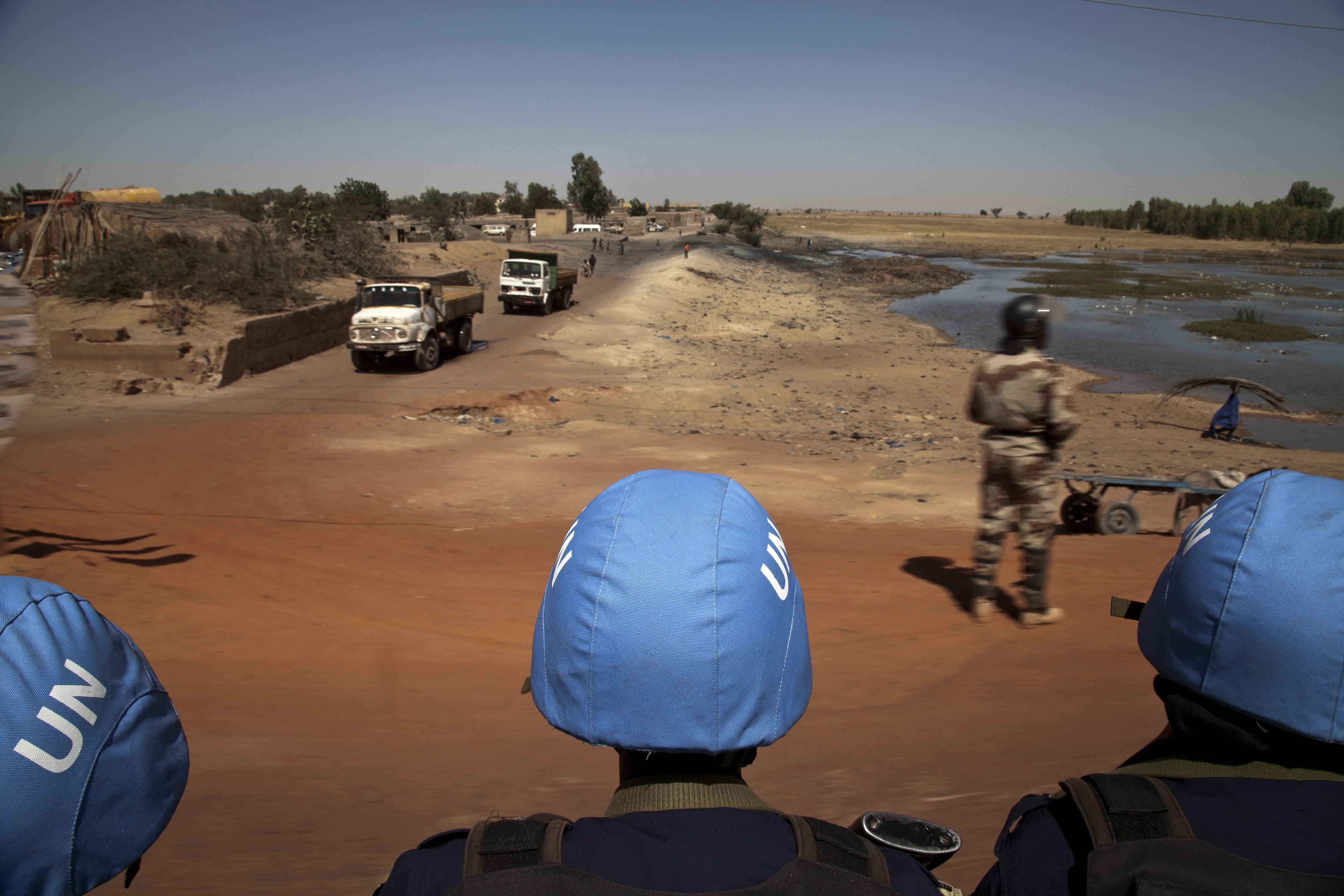“Rebels, drop your weapons. Let’s make peace.” “Peace in the north, the south, everywhere.” Such were some of the slogans written on placards carried by peaceful protesters in Bamako, the capital of Mali, earlier this week, where thousands of people took to the streets to express their desire to put the conflict which has been tearing their country apart for several years, behind them.
Mali, once recognized as a beacon of stability in West Africa, has been gripped by a complex political crisis since 2012, pitting the government against a patchwork of rebel groups, primarily in the northern part of the country. The recent Bamako protest takes place in the context of a very fragile political and security situation. Over the course of the last year, Malian representatives and international diplomats, with leadership from Algeria, have been in talks to negotiate a peace agreement between the government of Mali and the Coordination of the Movement of Azawad (CMA) – the Tuareg rebel alliance which includes several Tuareg independence groups, including the National Movement for the Liberation of Azawad (MNLA). While the agreement was initialed by the Malian government a few months ago, the process has stalled repeatedly, and hopes that the agreement would be fully executed, shortly after it was initialed in March, have been dashed. What is holding back the CMA from signing the agreement, and what are the implications for Mali and the region?
The CMA’s ongoing hesitation to sign the agreement has been undermining the entire pacification process. Indeed, the so-called Algiers Accord has been in the works for almost a year, and is supposed to be the key agreement to lay the foundation for peace in Mali. While the CMA and Tuareg rebel groups were represented during the negotiations, these never led to an outcome rebellious groups found satisfactory. Their grievances center around the lack of increased political, economic and social recognition for their region, Azawad, in the northern part of the country. One of the great challenges of these negotiations is that the universe of rebel groups in Mali is not a distinct, unified whole, and the CMA leadership, represented among the negotiating parties, is neither fully empowered nor fully representative of the actors on the ground. Compounded with the fact that their central political claim – a form of independence for their region – is essentially off the table, the CMA leadership has been in a difficult position, where accepting the terms of the agreement is perceived as a defeat, but not signing or accepting the terms of the agreement doesn’t guarantee further negotiations that would give them what they want.
On May 15, the government of Mali signed the accord – but the CMA didn’t – even though it had previously initialed the agreement. For the CMA leadership, there is a key legal distinction between initialing and signing an agreement: initialing the agreement shows political good will, while the refusal to sign sends a strong message about the agreement’s perceived value for the CMA. The gamble relies on the hope that the Malian government will be willing to begin negotiations anew, honing in on fundamental areas of grievance. According to the International Crisis Group, the agreement, primarily negotiated with international stakeholders’ priorities in mind, does not, in fact, address the root causes of the conflict. “It prioritises the restoration of order and stability rather than aiming to meet a desire for genuine change that runs deep among northern populations,” ICG said it in its recent report.
Since the accord was unilaterally signed, there have been no concrete steps taken to reestablish a negotiation framework for the parties. This lack of framework, and the weakness of the agreement, have created a vacuum situation for further violence and fighting, leading to more displacement, more deaths and a general instability which is endangering the entire peace process in Mali. Indeed, over the course of the last few weeks, Mali has seen an uptick in violence, pitting Tuareg rebels against pro-government militias and the Malian army. Meanwhile, the UN mission in Mali (MINUSMA) has also been the direct target of attacks, increasingly brazen, against its personnel, including a rare attack in the capitol city, Bamako. The confused and insecure situation, in the context of a broken cease-fire, which no one seems to be able to or care to enforce, is potentially explosive.
The dual goals of stability and greater socio-political integration in Mali have proven very difficult to reconcile. It’s clear from recent events that the Algiers Accord, as it stands, will not suffice to satisfy the demands of the rebellious groups.
While the conflict in Mali began a little over three years ago, it has, in fact, much deeper roots. The grievances expressed by Tuareg minorities are nothing new, and decades of mistrust and alternatively low-level and intense fighting have left populations divided, and created an environment where grassroots militias and armed groups can flourish. This gangrenous conflict, which clearly will not be solved by the imperfect Algiers Accord, is a threat not only to Mali, but to the region as a whole.
